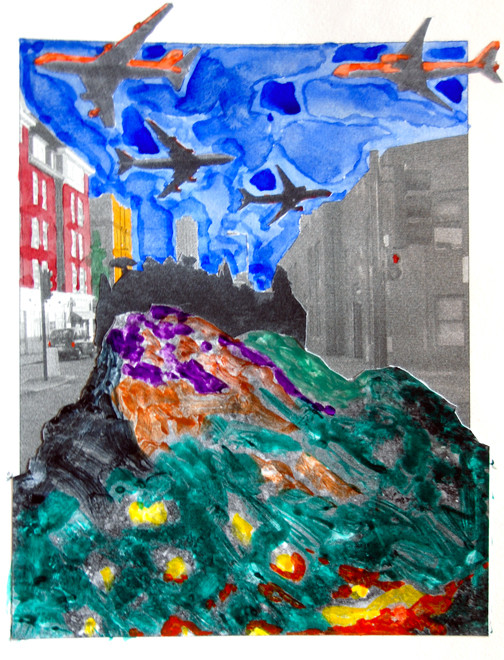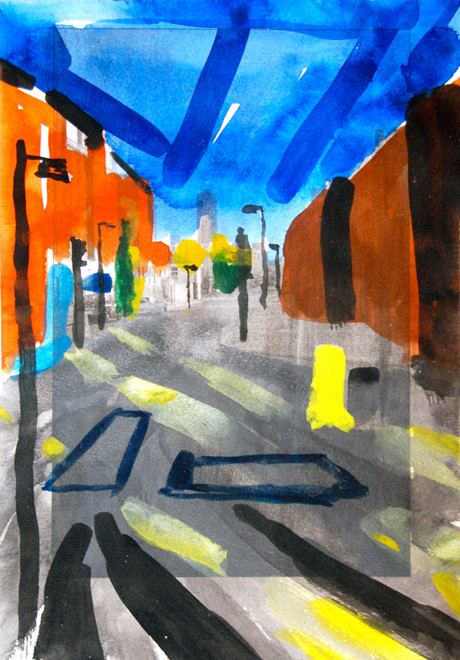Barbican Fantasies 2006-7
Notes
The three towers of the Barbican are a signifcant landmark in East London and the City. There are fantastic vistas down East End streets that are punctuated by one of the towers. The butting-up of both the glass curtain post-modern buildings of the City and the older streets of a fast disappearing 'East End' make for juxtapositions of very different worlds.
The Barbican was originally a Roman military fort on the outside of the walls of Roman London. It still has the sense of a bastion, raised above the streets around it, and it was supposed to usher in a utopian city design with traffic and pedestrians separated on different levels. As 'a machine for living' it has been a stunning success in part because housing in the City is extemely scarce, in part because of the original design and build, and in part due to the vociferous residents' group and the high service charges that result in proper maintenance of the fabric of the buildings.





